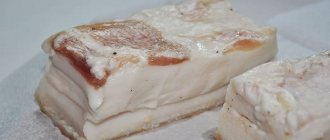Experts from the Russian Quality System began a study of one of the most popular and frequently found food products on Russian tables—processed cheese—and told customers what to pay attention to if they want to buy a truly high-quality and healthy product. Processed cheese, made according to all the rules, is full of useful substances. It contains casein, a valuable protein that is a source of amino acids necessary for our body. It contains calcium, which is known to be necessary for strengthening bone tissue. In addition, the value of processed cheese is that it contains a small amount of carbohydrates.
Article on the topic Hello, soy. Results of the examination of processed cheese with ham
Which brands of processed cheese have Roskoshestvo checked?
Experts checked 20 popular brands of processed cheese produced in Moscow and the Moscow region, St. Petersburg, Belgorod, Ryazan, Omsk, Sverdlovsk and Kaliningrad regions, in the Altai and Krasnodar territories, as well as in Belarus. All of them have a fat content from 45 to 60%.
Article on the topic Friend from Soviet times. Processed cheese soups and salads
The following brands took part in the study: Hochland, President, Rokler, Viola, Avida, Aldes, B. Y. Alexandrov”, “The Cheerful Milkman”, “Vitako”, “City of Cheese”, “Karat”, “Lakomo”, “Tender Summer”, “Nevsky”, “Pereyaslavl”, “Plavych”, “Polevskoe”, “Simply” !”, “Syrobogatov”, “Chuisky”.
What important information is on the label?
- Fat content . Processed cheeses can have different fat content: sliced from 5 to 65% fat in dry matter, pasty - from 20 to 70%.
- Storage conditions and shelf life . This product should be stored in a refrigerator at a temperature of +2 to +4 degrees Celsius. The shelf life may vary depending on the type and composition.
- Fillers . When choosing processed cheese with additional ingredients, it is better to choose a product with one filling (for example, cucumber or paprika). If the cheese contains ham, check that it contains ham and not flavorings.
What indicators were used to study processed cheeses?
Experts determined what raw materials were used in the production of processed cheese: mature cheese, as was historically accepted, or cottage cheese, from which this product is most often made in our time. Next, the quality of the raw materials was checked: how much protein it contains, how fresh it is, what is the mass fraction of fat in the product, etc.
Experts also tested the products for safety, determining whether they contained pesticides, phosphates, antibiotics, heavy metals, starch, toxins, nitrates and nitrites, as well as dyes and flavors. The cheeses were examined for the presence of GMOs, mold, and coliform bacteria. In addition, experts found out how much salt and preservatives (benzoic and sorbic acid) are in the products.
Roskachestvo experts checked whether the cheese samples participating in the study contained non-dairy fats. As specialists of the Russian Quality System note, the presence of vegetable fats in this product is unacceptable, since in this case it should be called “a milk-containing product with a milk fat substitute, produced using processed cheese technology.” All “competitors” underwent an organoleptic study: experts assessed their taste, smell, color and consistency.
Question answer
How to distinguish cheese from a cheese product?
History of processed cheese
The first processed cheese was prepared by Walter Gerber and Fritz Stettler in Switzerland in 1911. They crushed natural Emmental cheese and heated it with sodium citrate until they produced a smooth product that hardened when cooled. The original purpose of this product was to increase the shelf life of cheese sold to countries with warmer climates.
Around the same time, James Lewis Kraft was working on the creation of processed cheese in the United States of America. His first patent was issued to him in 1916, where he described melting pieces of Cheddar cheese and stirring it under heat to form a smooth, warm cheese, which was then packaged in glass jars.
The first patent did not mention the addition of emulsifying salts or other ingredients during processing. The use of an emulsifying salt (sodium phosphate) was described later in 1921 in a patent issued to George Herbert Garstin of the Phoenix Cheese Company.
Another patent, issued to Norman Kraft in 1921, described the packaging of processed cheese in the form of a 2.27 kg loaf, which was a significant breakthrough in the distribution of this product. They say that after the invention of such packaging, the consumption of processed cheese in the United States doubled.
Several other patents were later issued covering production methods, processing equipment and packaging of processed cheese.
In 1927, Wheeler and Scott received a patent to develop a stove that quickly and evenly heats cheese during production.
In 1935, Norman Craft received a patent for heating cheese by directly injecting hot steam into the product. However, direct steam injection for cooking included added moisture, which then required additional controls to ensure that the cheese did not exceed its legal moisture limits.
Improvements in process control have resulted in higher product quality.
In 1944, Norman Kraft received a patent that described the production of processed cheeses. In this process, hot processed cheese was transferred to a pair of cooling drums. The thin sheet of cheese was then passed onto a conveyor belt where it was cut into strips and crosswise to form slices of processed cheese.
These slices were flexible and had a glossy, smooth surface. They did not stick together and had the taste of freshly prepared cheese. Replacing the loaf shape with slices provided a significant breakthrough in convenience and sales.
The most significant was the invention of individually packaged slices.
In 1950, standards of identity for processed cheese were established by the US Food and Drug Administration. During this time, additional ingredients were also required to be listed on the label.
What processed cheeses are made from mature cheese?
You can determine which raw materials were used in the production of processed cheese by looking at the pH level. When using mature cheese, the pH will be around 5. If this value is higher, cottage cheese, milk powder or caseinates have been added to the product. As it turned out, five cheeses meet the Roskachestvo standard (5.4 - 5.9 pH units): Viola, Hochland, Karat, Polevskoye and Aldes. But the last two brands received a zero rating in the final rating, as they had serious violations.
The researchers also checked what peroxide value the product contains - this indicator determines the freshness of the raw material. For all the competitors it turned out to be normal, that is, cheese or cottage cheese that was not fresh was not used for production.
Useful properties of processed cheese
This product is quickly absorbed, restores energy reserves and the supply of nutrients and organic acids in the body. Like any tasty food, it stimulates the production of serotonin - the hormone of happiness, which has a positive effect on the nervous system: prevents the development of depression, calms, and speeds up falling asleep.
Benefits of processed cheese:
- Like all protein products, it has a beneficial effect on muscle and bone structure.
- Stimulates the release of digestive enzymes and bile acids.
- Distributes energy throughout the body.
- Improves the condition of skin, nails and hair.
- Due to its high casein content, it accelerates the growth of muscle mass.
- Normalizes the functioning of the cardiovascular system, prevents the development of atherosclerosis - thanks to arachidonic acid.
- Removes excess bad cholesterol with the help of phosphatides and lecithin.
- Forms a film on the mucous membrane of the digestive organs, protecting them from the aggressive effects of external factors (spicy and spicy foods).
- Prevents the body from losing heat due to fatty acids - caprylic, butyric, caproic.
Processed unsmoked cheeses without additives can be given to children, pregnant women and women during lactation.
If the product is introduced into the diet after prolonged fasting or malnutrition, the fat layer around the organs is quickly restored, preventing displacement or subsidence. It is most advisable to use creamy or dairy varieties to increase body weight.
Which processed cheeses have more protein and the correct fat value?
According to the Russian quality system standard, the protein level in processed cheeses should be in the range from 12 to 17%. It turned out that only the brands “Syrobogatov” and “Tender Summer” meet this requirement. The remaining cheeses had low protein content, which indicates the replacement of dairy products with whey powder, stabilizers or food additives.
The mass fraction of fat in the product was reliably indicated on the label only by Avida, B. Y. Alexandrov”, “Karat”, “Jolly Milkman” and “Aldes”. The indicator of the mass fraction of fat in dry matter corresponded to that stated in the labeling of four cheeses: “Vesely Molochnik”, “Chuysky”, “Pereyaslavl” and “Nevsky”.
Form is content
Having decided on the taste, decide for what purpose you need processed cheese: for breakfast, for cooking or for a snack. In this matter, focus on the packaging. Indeed, in a certain sense, for processed cheese, the form is a reflection of the content. For example, the product in the tubs is called a paste because it is intended to be spread on bread. Its consistency is soft and plastic. This representative of processed cheeses is suitable for breakfast. Slices in envelopes are an ideal form for sandwiches and baking. Well, the triangles are simply made for snacking. You just need to pull the bright narrow ribbon, unwrap the packaging - and you can enjoy your favorite taste.
And most importantly, processed cheeses allow you to prepare inexpensive and healthy dishes. They go well with mushrooms, salad, herbs, cabbage, cucumbers and other vegetables.
Which processed cheeses were produced with violations?
No violations were found in any of the products in terms of the content of pesticides, antibiotics, heavy metals, toxins, nitrates and nitrites. Manufacturers of all brands complied with the permissible levels of salt and preservatives (no more than 2 g/kg), as well as phosphates (20 g/kg). There were no GMOs or synthetic dyes in any sample. However, coliforms (coliform bacteria) - bacteria of the Escherichia coli group - were found in the processed cheese of the Polevskoye brand, which is why the product rating was reset to zero.
Four cheeses were found to be counterfeit. In Vitako, Nevsky and Aldes, experts found a discrepancy in fatty acid composition, and their rating was also reset. The Polevskoye cheese, whose rating was reset by experts for the presence of E. coli bacteria, contained elements of non-dairy origin - soybean DNA.
Contraindications and harm of processed cheese
Too fatty foods cause rapid weight gain, increase the load on the digestive organs, and leave unpleasant sensations after overeating.
If you are prone to allergies, you should avoid products with various additives or processed by smoking. It is dangerous to buy cheap products. They contain a high amount of artificial flavors and colors.
Processed cheese can cause harm:
- for kidney and heart diseases, arterial hypertension;
- with exacerbation of peptic ulcer and gastritis with high acidity;
- if heartburn occurs frequently;
- for obesity.
To minimize the negative impact of consumption, you should pay attention to the integrity of the packaging when purchasing. It must not be violated, and the label must read “Processed cheese” and not “Dairy cheese product”. The quality of the outer shell also matters. “PS” indicates polystyrene, which releases harmful compounds when stored for long periods of time. For food grade plastic, the “PP” stamp is used.
How did experts evaluate the taste, smell, color and consistency of processed cheeses?
According to GOST, processed cheeses should have a taste ranging from mild cheesy to cheesy or creamy; a sour or spicy taste is allowed. The color of the product can vary from white to yellow; if additives, such as ham, are used, the cheese may take on a corresponding shade. The consistency of processed cheese is supposed to be tender, plastic, spreadable or creamy. There should not be any drawings on the cut. All cheeses studied met these requirements.
Characteristics of processed cheese
Processed cheese is a dairy product that is made by mixing and heating natural cheeses with emulsifying salts to obtain a homogeneous mass. Cheese is usually prepared at a temperature of about 82 °C. During cooking, organic acids (citric, acetic, lactic) are added to increase the acidity level (pH level). The final pH of processed cheese should be 5.2-5.6. The final product has the same fat content as the raw cheese. A good processed cheese has a smooth surface, uniform color and uniform melting.
What cheeses are good for melting and why?
Several factors influence melting ability. One of them is moisture content. Cheeses with a high moisture content, such as mozzarella, cream cheese and Brie, melt more easily than dry, hard cheeses. In wet cheese, the proteins are loosely bound by a large amount of water interspersed between them, so they liquefy easily. But hard cheeses contain so little water that when melted they do not liquefy completely. Take pizza for example: Mozzarella melts into a liquid puddle on top of the pizza, while Parmesan particles remain separate pieces in the same pizza.
Effect of cheese age on meltability
The adhesive ability of calcium atoms holds casein molecules together. When the cheese is heated, the calcium “glue” dissolves and the casein molecules separate. In fresh, raw cheese, the casein molecules are large and elastic and tend to tangle into strings, which is why melted fresh Mozzarella is sticky. During aging, casein molecules are exposed to maturing enzymes that break down the casein into small pieces. When an old cheese like Cheddar melts, these little pieces of casein flow without getting tangled, and the cheese melts so much that it resembles a liquid rather than a viscous substance.
What does the final rating of processed cheeses look like?
- 1. “B.” Yu. Alexandrov" - 4.57 points;
- 2. “The Cheerful Milkman” - 4.5;
- 3. Hochland - 4,495;
- 4. Avida - 4.435 b;
- 5. “Syrobogatov” - 4,395;
- 6. Viola - 4.38;
- 7. “Pereyaslavl” - 4.365;
- 8. “Tender Summer” - 4,305;
- 9. President - 4.22;
- 10. “Carat” - 4.21;
- 11. “Chuysky” - 4.185;
- 12. Rokler - 4.185;
- 13. “Plavych” - 4.145;
- 14. “Simple!” - 4.11;
- 15. “Lakomo” - 4.07;
- 16. “City of Cheese” - 3.77;
- 17. “Aldes”, “Vitako”, “Nevsky”, “Polevskoye” - 0.











